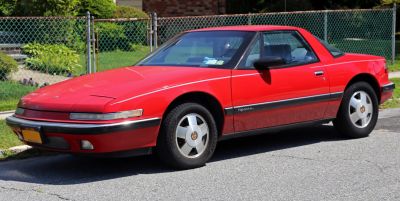 2017 Nissan GT-R (R35, facelift 2016) Dimensions, Size & Specs
2017 Nissan GT-R (R35, facelift 2016) Dimensions, Size & SpecsMeasurements of the 2017 Nissan GT-R, engineered for optimal performance and comfort
| Dimensions | |
|---|---|
| Length: | 4690-4710 mm184.6-185.4 in15.4-15.5 ft |
| Width: | 1895 mm74.6 in6.2 ft |
| Height: | 1370 mm53.9 in4.5 ft |
| Ground Clearance: | 105 mm4.1 in0.3 ft |
| Trunk Capacity: | 249-315 liter8.8-11.1 cu ft |
| Weight Specifications | |
| Curb Weight: | 1703-1752 kg3754-3862 lbs |
| Maximal permitted Weight: | 2200 kg4850 lbs |
| Tire Specifications | |
| Rims Sizes: | 20-inch rims:
|
| Tire Sizes: |
|
The Nissan GT-R R35 facelift introduced in 2016 and produced until 2023 represents an evolution of Nissan's high-performance coupe with enhanced styling and updated technical features. Measuring between 4690 mm and 4710 mm (184.6 to 185.4 inches) in length, the GT-R R35 from this generation maintains a broad stance with a width of 1895 mm (74.6 inches) and a streamlined height of 1370 mm (53.9 inches). This powerful sports coupe weighs between 1703 kg and 1752 kg (3753 to 3860 lbs) curb weight, with a maximum allowable weight of 2200 kg (4850 lbs), balancing agility with stability on the road. The GT-R features a relatively low ride height of 105 mm (4.1 inches), emphasizing its aerodynamic and performance-oriented design. Practicality in the GT-R R35 facelift includes a luggage capacity ranging from 249 to 315 liters (8.8 to 11.1 cubic feet), which is adequate for a sports car of its class. Wheel options include large, performance-focused rims sized at 10.5J x 20 inches, 9.5J x 20 inches, and 10J x 20 inches paired with high-performance tires measuring 285/35 R20 and 255/40 R20, optimized for grip and handling dynamics. This generation of the Nissan GT-R combines iconic sports car dimensions with premium engineering, maintaining its reputation as a track-capable yet road-friendly high-performance coupe.
Discover the standout features that make the 2017 Nissan GT-R a leader in its class
Have a question? Please check our knowledgebase first.
The Nissan GT-R (R35 facelift 2016) has an exterior length that ranges from 4690 mm to 4710 mm (approximately 184.6 inches to 185.4 inches). This slight variation in length can be attributed to minor updates or different trim options throughout the production period from 2016 to 2023. Despite these small differences, the GT-R maintains a consistently aggressive and aerodynamic profile befitting its high-performance coupe status. The length is carefully optimized to balance stability at high speeds while retaining maneuverability essential for both street and track driving.
The Nissan GT-R (R35 facelift 2016) has a width of 1895 mm (approximately 74.6 inches). This wide stance contributes significantly to its road-hugging capability, providing excellent lateral stability and traction, especially during high-speed cornering. The broad width also gives the GT-R an aggressive and muscular appearance, enhancing its identity as a powerful sports coupe. Moreover, this width accommodates large tires and wide rims, such as the 10.5J x 20 and 9.5J x 20 sizes, which improve grip and handling, making the car more responsive and precise on the road and track.
With a height of 1370 mm (around 53.9 inches), the Nissan GT-R (R35 facelift 2016) is relatively low-slung, which aids aerodynamic efficiency by reducing air resistance at high speeds. This low profile helps the car slice through the air with minimal drag while improving high-speed stability. However, the lower height means that headroom inside the cabin is compact, prioritizing a sporty driving position rather than roomy passenger space. The GT-R’s interior feels snug and cockpit-like, emphasizing driver engagement and control over luxury or spaciousness.
The curb weight of the Nissan GT-R (R35 facelift 2016) ranges between 1703 kg and 1752 kg (approximately 3753 lbs to 3861 lbs). This weight is relatively moderate for a high-performance sports coupe, considering the robust all-wheel-drive system, twin-turbo V6 engine, and extensive performance technology packed into the vehicle. The balance between weight and power ensures the vehicle delivers quick acceleration, stable handling, and precise steering. Though not the lightest sports car on the market, Nissan has used advanced engineering to keep the weight manageable, allowing the GT-R to maintain its legendary status as a supercar competitor with exceptional agility.
The Nissan GT-R (R35 facelift 2016) generally fits comfortably into a standard garage, but it is important to consider the vehicle’s dimensions before parking. With a length of up to 4710 mm (185.4 inches) and a width of 1895 mm (74.6 inches), it will require a space at least around 5 meters (16.4 feet) deep and about 2 meters (6.5 feet) wide to accommodate the car safely with enough room to open doors and maneuver. Most conventional garages with standard dimensions of approximately 2.4 meters (8 feet) in width and 5.5 to 6 meters (18 to 20 feet) in depth are adequate. The low height of the GT-R (1370 mm or 53.9 inches) ensures no issues with overhead clearance.
The Nissan GT-R (R35 facelift 2016) offers a luggage capacity between 249 liters and 315 liters (approximately 8.8 to 11.1 cubic feet). While this capacity is quite limited compared to conventional sedans or SUVs, it is typical for a high-performance sports coupe where space is sacrificed to prioritize performance and aerodynamics. The luggage compartment is best suited for small bags, groceries, or weekend gear rather than large suitcases, making the car more practical for daily commuting or short trips rather than long vacations. Despite this, the GT-R still provides a reasonable amount of storage for a performance vehicle, balancing usability with sportiness.
Compared to its predecessor, the Nissan GT-R R34, the R35 facelift 2016 version is significantly larger and more modern in design. The R34 had a length of around 4460 mm (175.6 inches), width of 1780 mm (70.1 inches), and height of 1325 mm (52.2 inches), making the R35 substantially longer (up to 4710 mm), wider (1895 mm), and slightly taller (1370 mm). This size increase allows for advanced performance technology, improved interior comfort, and a more aggressive stance. Aesthetically, the R35 features sharper, more aerodynamic lines and aggressive styling cues that reflect its supercar status, while the R34 retains a more classic, boxy sports car look. The R35 also incorporates significant advancements in engineering, suspension, and drivetrain systems, making it a comprehensive evolution over the R34.
The Nissan GT-R (R35 facelift 2016) competes with sports coupes like the Porsche 911, Chevrolet Corvette, and Audi R8. Dimensionally, its length (up to 4710 mm/185.4 inches) and width (1895 mm/74.6 inches) position it in the larger end of the segment, giving it an imposing road presence. Weight-wise, it is moderately heavier than some competitors due to its all-wheel-drive system but balances this with powerful twin-turbo V6 performance. While cars like the Porsche 911 may be slightly smaller and lighter, the GT-R often matches or surpasses them in straight-line performance. The broad width and low ride height (105 mm ground clearance) contribute to excellent handling dynamics, though it may be less agile in very tight corners compared to lighter competitors. Overall, the R35 facelift offers a unique blend of size, power, and technology at a compelling price point.
The Nissan GT-R (R35 facelift 2016) comes equipped with large performance-oriented tires sized at 285/35 R20 and 255/40 R20, coupled with rim sizes of 10.5J x 20, 9.5J x 20, and 10J x 20 inches. These wide tires and large rims maximize the contact patch with the road, providing enhanced grip and stability during aggressive driving, cornering, and acceleration. The staggered tire setup, with wider rear tires, supports the GT-R’s impressive traction, particularly benefiting its all-wheel-drive system. The sizable rims also contribute to improved braking performance and overall chassis control. These specs reinforce the car’s identity as a high-performance sports coupe designed for both street use and track capability.
The Nissan GT-R (R35 facelift 2016) has a ground clearance of 105 mm (approximately 4.13 inches), positioning it quite low compared to regular passenger vehicles. This low ride height enhances aerodynamic efficiency and lowers the vehicle’s center of gravity, which improves handling, stability, and cornering performance, especially on smooth roads or racetracks. However, the low clearance means the GT-R is more susceptible to scrapes and damage when navigating speed bumps, steep driveways, or uneven surfaces common in everyday driving. Owners typically need to exercise care in such environments to avoid underbody contact, but the trade-off results in superior on-road performance and a thrilling driving experience.
Discover similar sized cars.

| Production: | 2023-present |
|---|---|
| Model Year: | 2024 |
| Length: | 4690-4710 mm184.6-185.4 in |
| Width: | 1895 mm74.6 in |
| Height: | 1370 mm53.9 in |

| Production: | 2010-2016 |
|---|---|
| Model Year: | 2011 |
| Length: | 4670-4680 mm183.9-184.3 in |
| Width: | 1895 mm74.6 in |
| Height: | 1370 mm53.9 in |

| Production: | 1988-1991 |
|---|---|
| Model Year: | 1988 |
| Length: | 4640 mm182.7 in |
| Width: | 1855 mm73.0 in |
| Height: | 1310 mm51.6 in |
